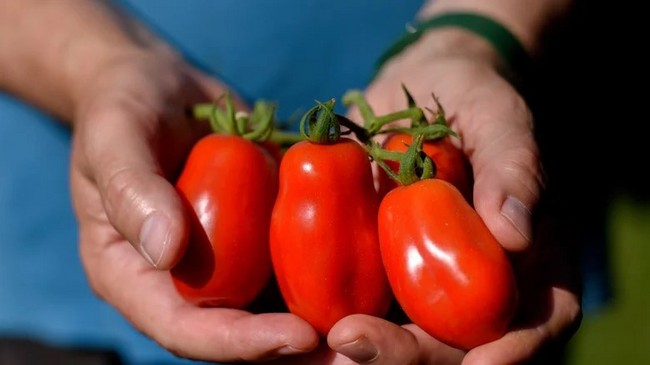✕



✕

Tag:pasta amatriciana tomatoes 2024-12-25 11:14

Alessio Orru/Shutterstock
For many travelers, a visit to Rome isn't complete without a sampling of the Italian city's four famous pasta dishes: cacio e pepe, carbonara, pasta alla gricia, and pasta Amatriciana. Which one is not like the others? That would be pasta Amatriciana. The first three are meaty, cheese, and creamy; the last one, sometimes spelled pasta all'Amatriciana, is the only member of the quartet that includes tomatoes. Along with salty preserved pork and a hint of chili pepper, the tomatoes form the base of a rustic sauce that gets finished with the sharp taste of Pecorino Romano cheese.
Here's a historical fact that doesn't quite seem true: Tomatoes are not native to Italy, nor are they native to Europe. Originally from South America, this produce was first transported across the Atlantic in the 1500s as Spaniards colonized the New World. That means that pasta Amatriciana is the result of a complicated cross-cultural exchange, a dish that combines the humble ingredients enjoyed by farmers around the town of Amatrice — the cured pork jowl known as guanciale, the nutty sheep's cheese Pecorino — with a fruit from an entirely different continent.
After the tomato made its way to Europe, Romans and others from the region initially viewed it with suspicion. It's related to the deadly nightshade plant, after all, so they worried that it might be dangerous. Eventually, though, its gorgeous flavor won out, and Italy embraced it enthusiastically. The proof? It's still used in pasta Amatriciana today.
The building blocks of pasta amatriciana

Ordasiphoto/Shutterstock
To better understand where pasta Amatriciana comes from, let's go back to one of those other big-four Roman dishes: pasta alla gricia. With a simple sauce of guanciale and Pecorino, it looks a lot like pasta Amatriciana, just without the tomatoes. Such dishes emerged from sheep farmers plying the fields of Lazio, the region that's home to both Rome and Amatrice. As far back as a millennium, these farmers would feed themselves by taking the ingredients they had on hand — sheep's cheese and salty preserved meat — and turning them into a rich pasta sauce.
Enter the tomato, whose name comes from the Aztec word "tomatl." We don't know exactly when Spanish colonists brought it to Europe or exactly how it arrived in the region that would become Italy (which didn't unify as a country until 1861), but we know it was in the mid-1500s. We know, too, that it took the locals a while to get used to it: A couple more centuries passed before those shepherds began adding tomatoes to the sauce that already included guanciale and Pecorino, creating a forerunner to the dish we know today as pasta Amatriciana. In Rome and elsewhere, the earlier version lives on as pasta alla gricia, sometimes called white Amatriciana.
In addition to guanciale, Pecorino, and tomatoes, there's one other ingredient that typically goes into pasta Amatriciana: the long, hollow noodles known as bucatini. Got the components down? Great — now you can make this five-ingredient bucatini all-Amatriciana recipe yourself.
About Us Terms of Service Privacy Policy Contact Us
Hotline(+86)17301604571
 Enterprise WeChat
Enterprise WeChat
for Client Service
 EZBuy
EZBuy
WeChat APP
Sinoexpo Digital Platform
Shanghai Sinoexpo Informa Markets International Exhibition Co., Ltd. All rights reserved
沪ICP备05034851号-77
 沪公网安备31010402000543号
沪公网安备31010402000543号